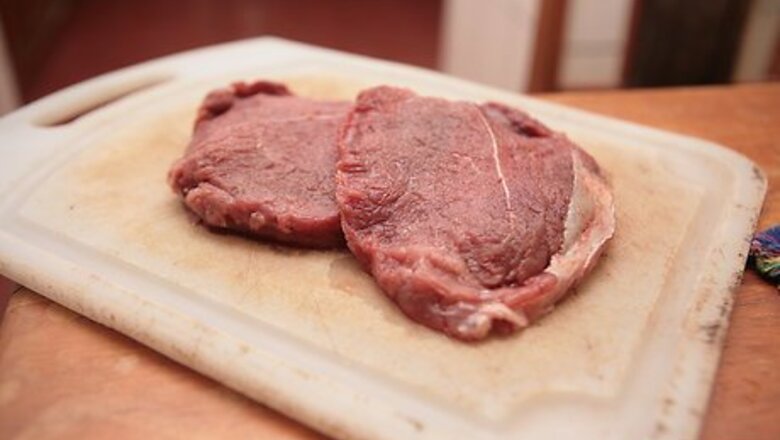
views
X
Trustworthy Source
US Food and Drug Administration
U.S. government agency responsible for promoting public health
Go to source
Note: Never refreeze raw meat that was previously frozen, as this can pose a health hazard.[2]
X
Research source
If you've thawed more meat than you can eat at one time, cook all the meat and then freeze the remainder of it after it's cooked.[3]
X
Research source
Steps
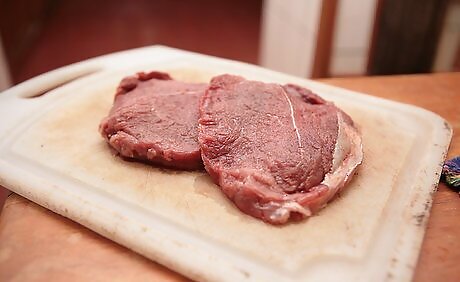
Start with quality meat. Freshness of meat will affect the way it freezes. When meat is frozen at peak quality, it will taste better when thawed and cooked.

Discard any previous packaging. It is safe to freeze meat in its original packaging, however most commercial packaging is permeable to air, which may cause freezer burn if left only in its original package. Take the meat out of the plastic or paper you brought it home in. Discard the tray as well.

Prepare the meat. Cut excess fat off meat before freezing with a sharp knife, and remove bones or bony pieces that might pierce the freezer wrap. If you want to keep the bone in, pad the sharp parts with newspaper or butcher paper before wrapping.

Lay out a large sheet of moisture-resistant freezer wrap on a clean surface. Make sure you use a sheet large enough to let the joined edges on each side to fold down at least 3 times over the meat to be frozen.
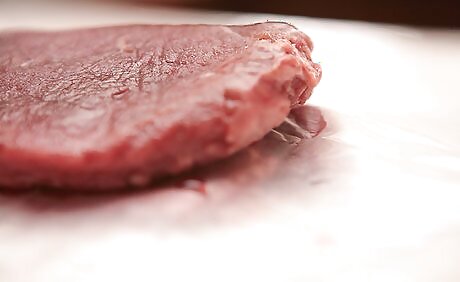
Place a sheet of waxed paper between chops, ground meat patties, or other pieces of meat. This is optional but will provide ease of separation without thawing the entire package.
Wrapping the Meat from the Center of the Paper
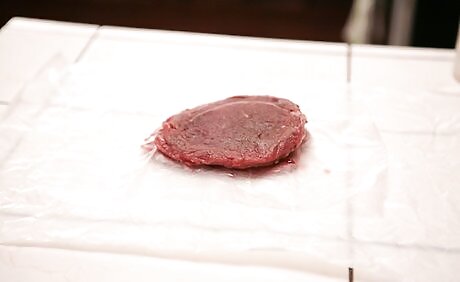
Place the meat in the center of the freezer wrap.
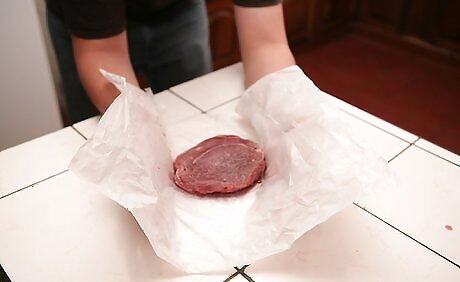
Take 2 opposite edges in each hand, and bring them together in the middle, over the meat. Fold the edges together, and then fold them down, creating a 1 inch (2.54 cm) fold each time.
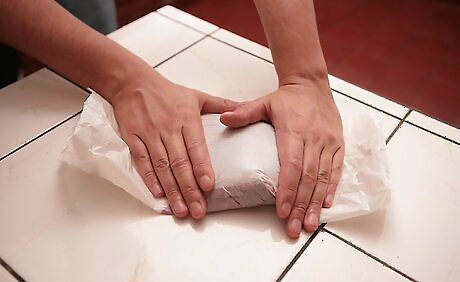
Gently apply pressure to press out air on each side. You want to wrap the meat as closely as possible.
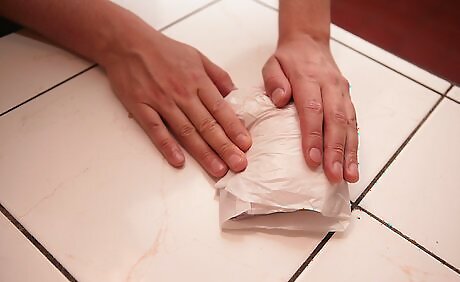
Fold the ends down tightly against the meat.

Use freezer tape to seal the edges firmly to the meat.
Pack the wrapped meat in moisture-resistant freezer bags. Use a waterproof marker to label the bags with contents and date they were frozen.
Wrapping the Meat from the Corner of the Paper
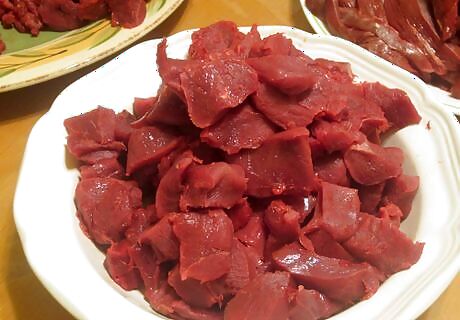
For this method, if you're using multiple cuts of meat (or ground meat) in the package, you'll need to take care to keep the paper pressed tight against all sides of the meat. This method is a little more complex than the previous method and may take some practice to perfect.
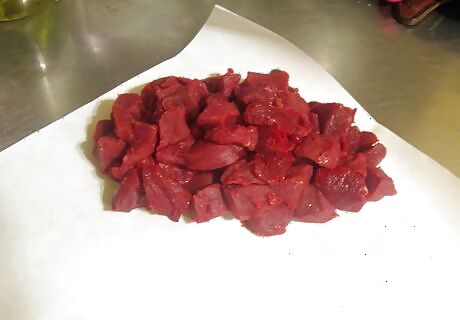
Set the meat in the upper right corner of the paper. It doesn't have to be that corner, but if you're right-handed having it there will usually make it easiest. If you're doing steaks (or similar cuts of meat), remember how many pieces are in each package. This'll come into play later on when you're labeling the package for freezing.
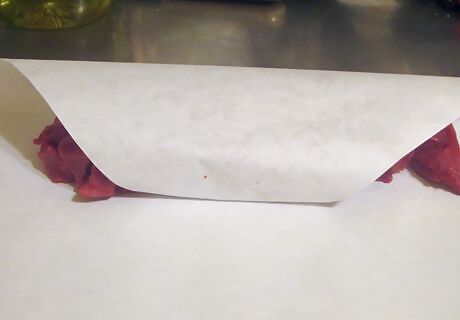
Fold the end of the corner over the meat and flip the meat over towards the center. The meat should lay perpendicular to the opposite corner of paper.
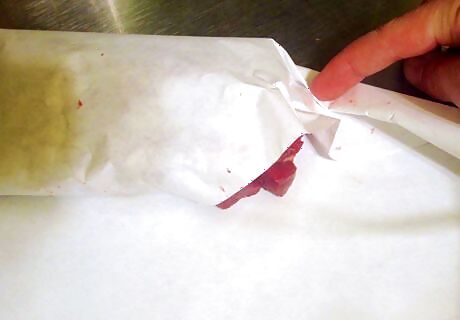
Along one side of the meat, fold the paper over itself just a bit. This'll come in handy during the next step, so when you fold that same paper side over the meat, the corner will be nice and tight.
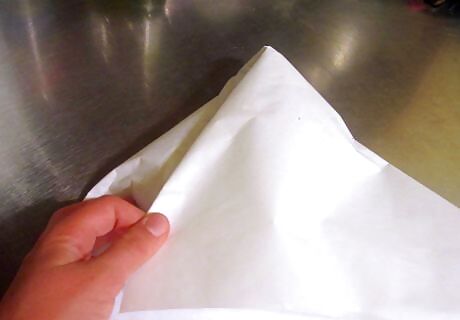
Fold the same side of paper over the meat. Try to keep the fold very tight against the side of the meat.Fold paper over meat 2.jpg
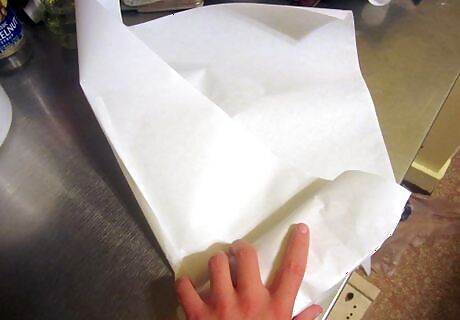
Flip the meat again, keeping the paper going lengthwise with the meat very tight. Flip the meat towards the far end of the paper as you did the first time.
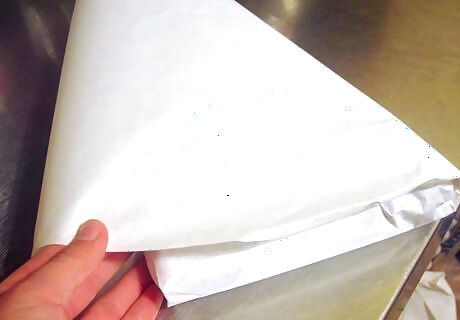
Do the same thing with the paper on the other side of the meat as you did with the first side. Start by folding the edge of the paper a little over itself, then fold the entirety of that side of paper over the meat. If the corner of the side of paper sticks out beyond the meat, you can either fold it back upon itself, or tuck the tail into the crease of the first side you folded over.

Flip the meat towards the far end of the paper until the paper's nearly all used. Keep the meat inside the paper very tightly as you do this. It takes practice, but you'll improve with time.
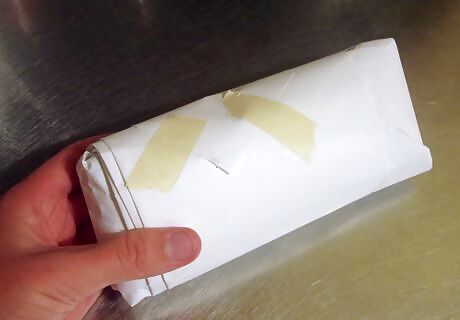
Tape the package. Usually two 2" pieces of freezer tape will suffice.

Label the package with its contents! You'll want to include the type of meat (beef, chicken, etc.), the cut of meat, and the date. If you're doing steaks (or similar cuts of meat), include how many steaks are in each package. If you're freezing meat of several animals (such as several deer, or several cows), you may want to label each package for each animal. This way, if you find later that one of the animals has really bad meat, you don't have to dispose of all the frozen meat. One way to label the meat for this would be to label it as 'Cow #1, Cow #2', etc.




















Comments
0 comment